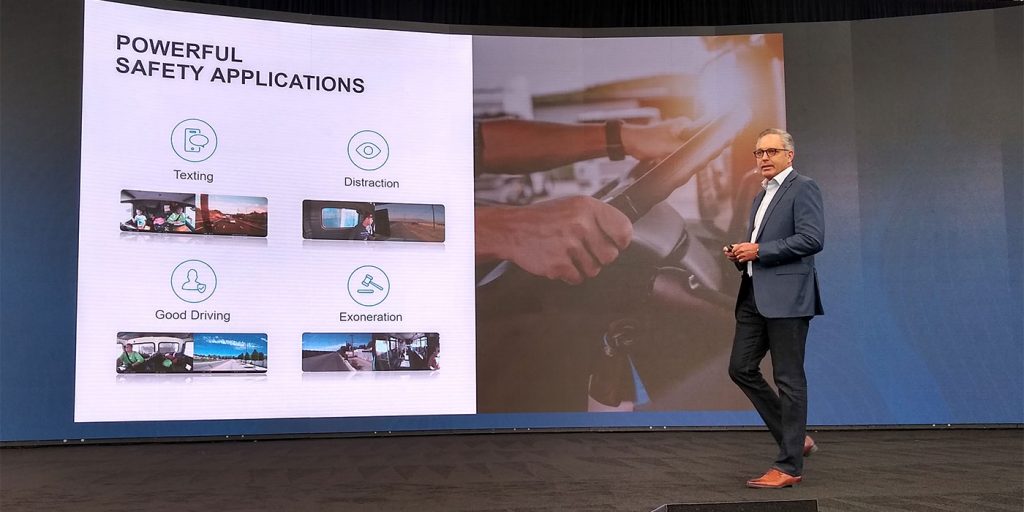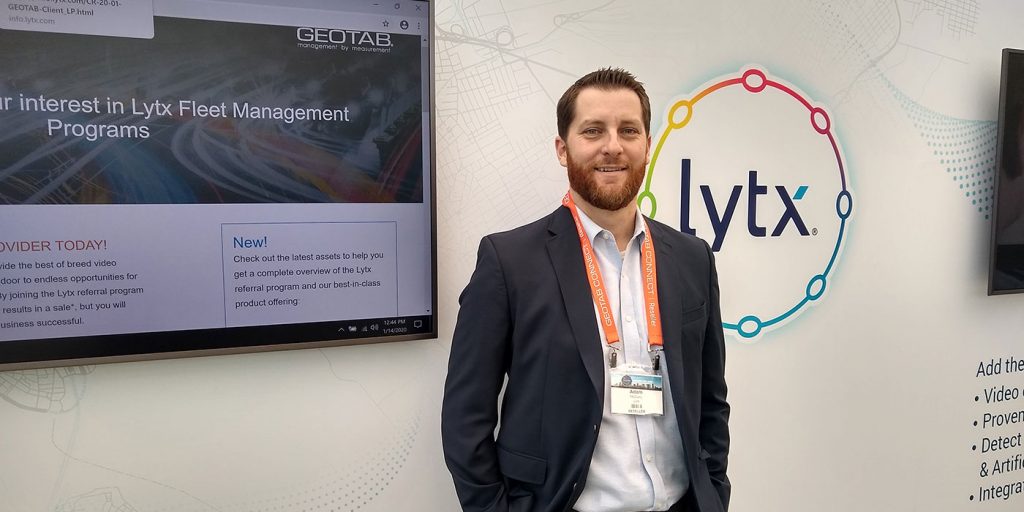Video telematics continues to grow. Last year, it was one of the most read topics by Fleet Equipment readers and continues to roll strong into 2020. Video telematics providers are turning truck video into actionable telematics data in the same way solutions providers have helped you boost efficiency and productivity.
One of the biggest announcements from the Geotab Connect conference was the integration between Geotab and Lytx. Fleet Equipment had a chance to meet with Adam McCarty, Lytx’s vice president of marketing and growth Initiatives, to talk about how fleets can turn video telematics insight into actionable efficiency and productivity improvements.
FE: How do you feel the perception is of video telematics in the truck fleet market, and where are fleet managers seeing the value right now?
McCarty: This feels like a tipping point for video. I bet if you had been at this conference four or five years ago, I don’t know how many video providers you would see at that point. What we’re finding is that a lot of folks are in the market because there’s a big gold rush for video. But it’s in in a reactive sense. People are saying, ‘There was a crash. I want video evidence of the incident.’ We do that, but we take it further.
What we do is more focused on pro-active use of video. For example, if you have 100 drivers and each drive five hours a day, then you have 500 hours of video. What were the most important 20 nuggets of that day without any noise or inaccuracy? We find those and serve them up to our customers.
FE: What level of information do you provide to fleet managers, and then how does the integration with Geotab deepen that visibility?
McCarty: We go through every single video, through 60 different behaviors, label them and then deliver them to our customers. Then we use that video and that data to make our risk detection algorithms even smarter. So now we have all this labeled video, we can feed that back into the AI engine to make it smarter, and provide even more value to the customer.
This is why, at Lytx, our experience is so rich. We’ve done this for 20 years. We know what to look for. For example, waste trucks are supposed to stop before railroad tracks. So we look for that. We’ve built this experience and expertise over two decades to be able to serve up exactly what the customer wants. Let’s say we have a customer in which the CEO has a campaign against cell phone use. So he wants alerts on events where the driver was looking at one. We can show them that. Another customer is focused on following distance less than one second. Lytx is able to provide that information as well.

The integration with Geotab is more about the user experience. Our joint users are able to live within the Geotab ecosystem and the Geotab platform. They can be within the Geotab software and get the full rich experience of our videos, all through a single sign-on. That’s point one of the integration.
Point two is the ability to actually tap into our DriveCam device from a Geotab data point on a map to browse and retrieve video. It’s a very deep, rich integration with their map. And our camera.
FE: How does the video recording and retrieval work?
McCarty: The device is constantly saving video, but there are a couple of ways video comes off of the device. One is it says, ‘Hey, something abnormal happened.’ It could be speeding. It could be a hard-braking instance. It could be our machine vision technology sees a cell phone. That triggers the video and sends it to the cloud, and then we offer a service to put human eyes on it to review.
Additionally, a customer can also retrieve video themselves. So they can browse for some kind of an incident and find it and pull it back. We store videos for a total of a year but that’s only the video that the customer really wants. It’s hosted online for 90 days and then we archive it.
FE: How does the human review work? How large is the team in the office that goes through that? And what, if any, privacy concerns go in with how you handle that information?
McCarty: We are highly conscious of our customers’ privacy. We have large government customers and we’ve had to go through all the proper security protocols to be able to store the data and host the data. We have a team of a couple hundred people that are constantly reviewing video. They review millions of videos a month.
The nice thing about human review is that video is inherently noisy. So if I sent you 100 clips, maybe 50 of them represent risky behavior and 50 of them show incidental stuff that isn’t that important. Our customers look to us to show them what is really important.
We take our human review very seriously. Our book of review criteria is an encyclopedia that our analysts actually have to study and know. It’s a very intensive process.
FE: Say I’m a fleet interested in video telematics, what would you recommend to me of in terms of questions to ask suppliers and things to look for in a solution?
McCarty: First and foremost, I think you want to make sure you’re working with a company that has been in it a long time, and ensure the commercial grade viability of the device. You don’t want the camera to not perform when you need it. And that is really important–having a partner that does more than just provide you technology but also wraps a service around it; making sure your devices are healthy, connecting, pushing firmware out.
And then, the worst thing is if the system just turns into noise. If you’re getting 30 or 40 clips a day, it’s hard to filter through them yourself. Eventually you stop looking at them. Now you’ve almost turned it into a liability. Because now you have a bunch of data you’re not acting on. So you really want somebody who’s going to be able to help you, feed you this information, and make it configurable for your business.













